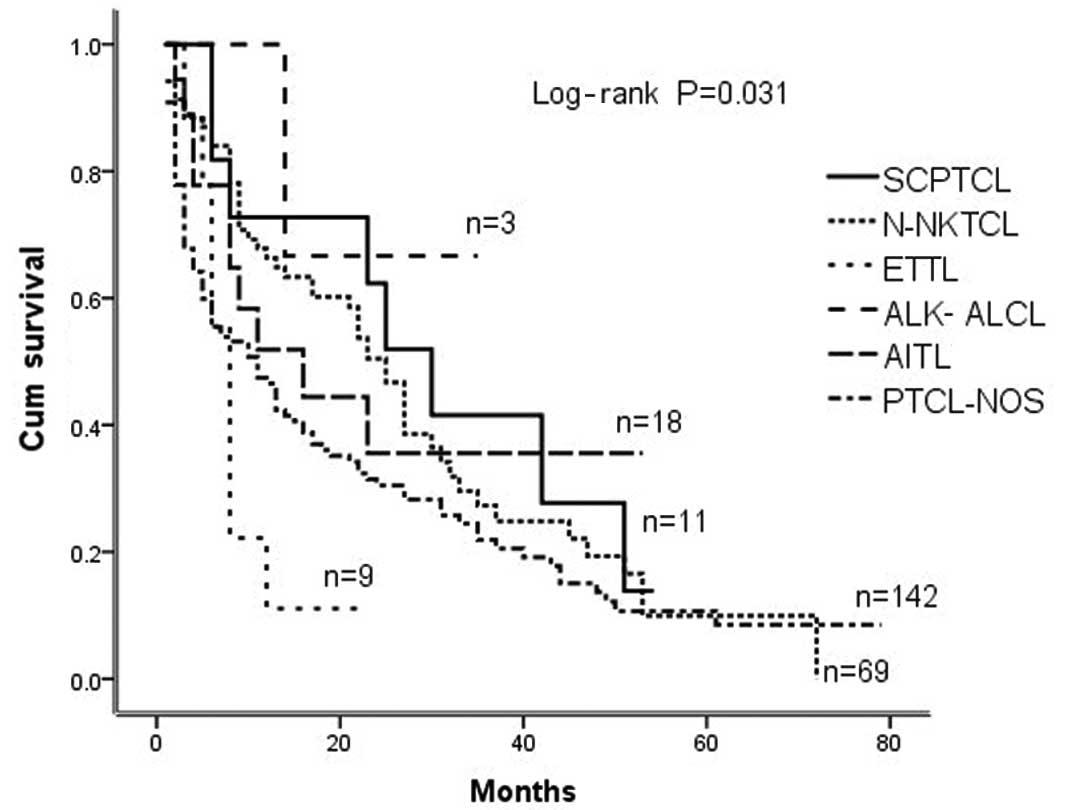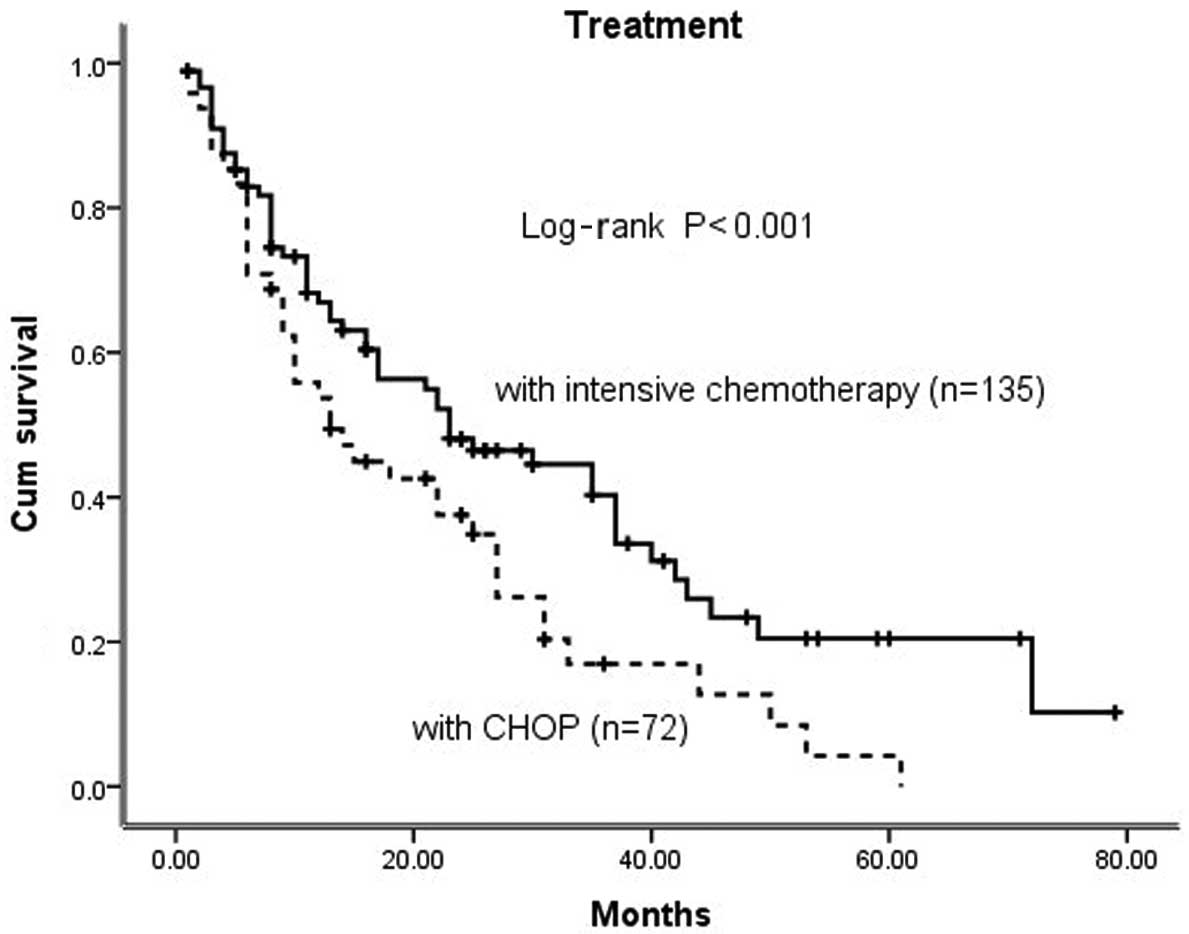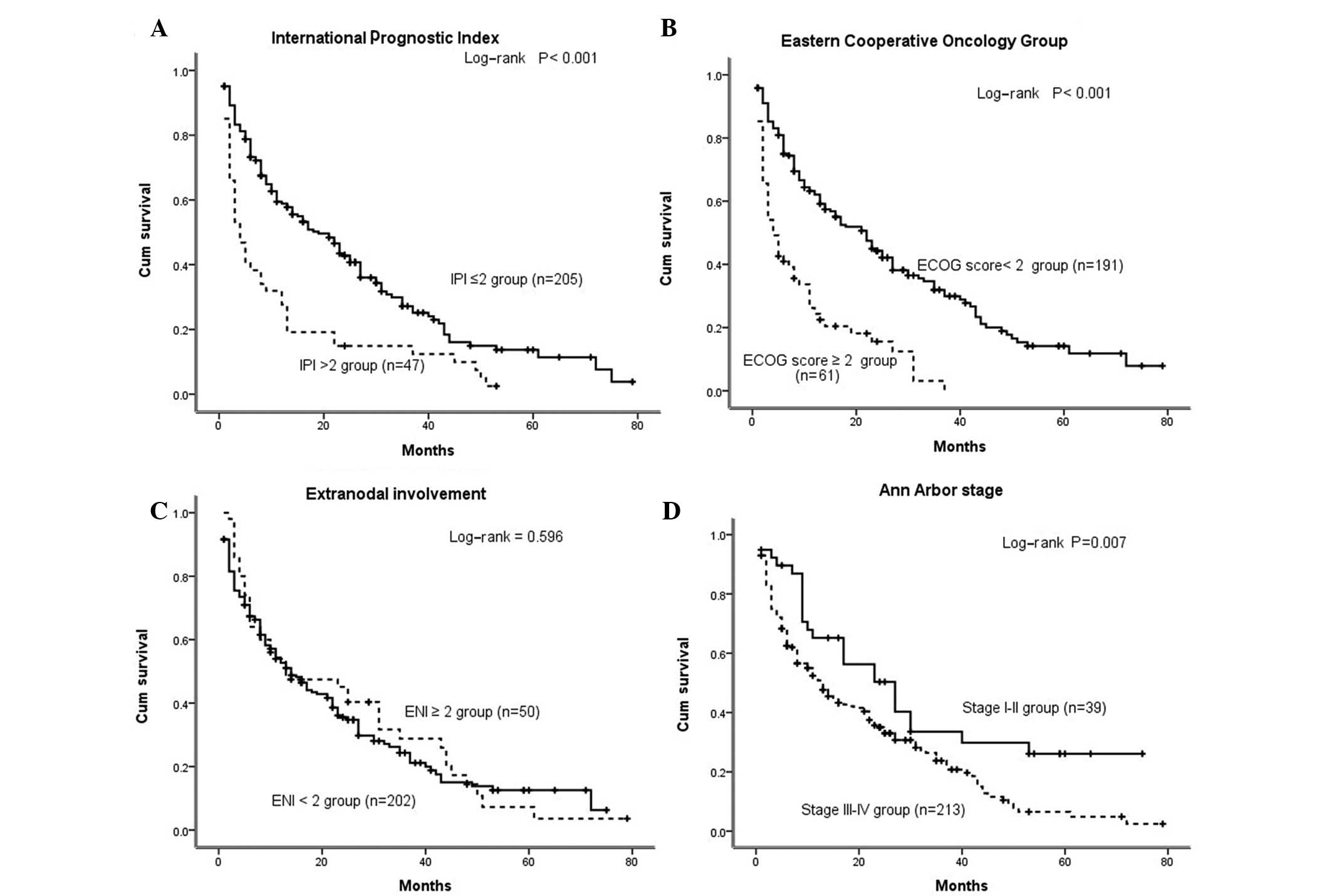|
1
|
Tomita N, Motomura S, Hyo R, et al:
Comparison of peripheral T-cell lymphomas and diffuse large B-cell
lymphoma. Cancer. 109:1146–1151. 2007. View Article : Google Scholar : PubMed/NCBI
|
|
2
|
Kojima H, Hasegawa Y, Suzukawa K, et al:
Clinicopathological features and prognostic factors of Japanese
patients with ‘peripheral T-cell lymphoma, unspecified’ diagnosed
according to the WHO classification. Leuk Res. 28:1287–1292.
2004.
|
|
3
|
Ascani S, Zinzani PL, Gherlinzoni F, et
al: Peripheral T-cell lymphomas. Clinico-pathologic study of 168
cases diagnosed according to the R.E.A.L. Classification Ann Oncol.
8:583–592. 1997. View Article : Google Scholar : PubMed/NCBI
|
|
4
|
Armitage JO, Vose JM, Linder J, et al:
Clinical significance of immunophenotype in diffuse aggressive
non-Hodgkin’s lymphoma. J Clin Oncol. 7:1783–1790. 1989.
|
|
5
|
Vose J, Armitage J and Weisenburger D;
International T-Cell Lymphoma Project. International peripheral
T-cell and natural killer/T-cell lymphoma study: pathology findings
and clinical outcomes. J Clin Oncol. 26:4124–4130. 2008. View Article : Google Scholar : PubMed/NCBI
|
|
6
|
Mourad N, Mounier N, Brière J, et al;
Groupe d’Etude des Lymphomes de l’Adulte. Clinical, biologic, and
pathologic features in 157 patients with angioimmunoblastic T-cell
lymphoma treated within the Groupe d’Etude des Lymphomes de
l’Adulte (GELA) trials. Blood. 111:4463–4470. 2008.PubMed/NCBI
|
|
7
|
Niitsu N, Okamoto M, Nakamine H, Aoki S,
Motomura S and Hirano M: Clinico-pathologic features and outcome of
Japanese patients with peripheral T-cell lymphomas. Hematol Oncol.
26:152–158. 2008. View
Article : Google Scholar : PubMed/NCBI
|
|
8
|
Siegert W, Nerl C, Agthe A, et al:
Angioimmunoblastic lymphadenopathy (AILD)-type T-cell lymphoma:
prognostic impact of clinical observations and laboratory findings
at presentation. The Kiel Lymphoma Study Group Ann Oncol.
6:659–664. 1995.PubMed/NCBI
|
|
9
|
No authors listed. A predictive model for
aggressive non-Hodgkin’s lymphoma. The International Non-Hodgkin’s
Lymphoma Prognostic Factors Project. N Engl J Med. 329:987–994.
1993.
|
|
10
|
Swerdlow SH, Campo E, Harris NL, Jaffe ES,
Pileri SA, Stein H, Thiele J and Vardiman JW: WHO Classification of
Tumours of Haematopoietic and Lymphoid Tissues. 2. 4th edition.
International Agency for Research on Cancer; Lyon: 2008
|
|
11
|
Gallamini A, Stelitano C, Calvi R, et al:
Peripheral T-cell lymphoma unspecified (PTCL-U): a new prognostic
model from a retrospective multicentric clinical study. Blood.
103:2474–2479. 2004. View Article : Google Scholar : PubMed/NCBI
|
|
12
|
Ansell SM, Habermann TM, Kurtin PJ, et al:
Predictive capacity of the International Prognostic Factor Index in
patients with peripheral T-cell lymphoma. J Clin Oncol.
15:2296–2301. 1997.PubMed/NCBI
|
|
13
|
Gisselbrecht C, Gaulard P, Lepage E, et
al: Prognostic significance of T-cell phenotype in aggressive
non-Hodgkin’s lymphomas. Groupe d’Etudes des Lymphomes de l’Adulte
(GELA). Blood. 92:76–82. 1998.
|
|
14
|
López-Guillermo A, Cid J, Salar A, et al:
Peripheral T-cell lymphomas: Initial features, natural history and
prognostic factors in a series of 174 patients diagnosed according
to the R.E.A.L. classification. Ann Oncol. 9:849–855.
1998.PubMed/NCBI
|
|
15
|
Vitolo U, Bertini M, Brusamolino E, et al:
MACOP-B treatment in diffuse large-cell lymphoma: identification of
prognostic groups in an Italian multicenter study. J Clin Oncol.
10:219–227. 1992.PubMed/NCBI
|
|
16
|
Robertson LE, Redman JR, Butler JJ,
Osborne BM, Velasquez WS, McLaughlin P, Swan F, Rodriguez MA,
Hagemeister FB, Fuller LM, et al: Discordant bone marrow
involvement in diffuse large-cell lymphoma: a distinct
clinical-pathologic entity associated with a continuous risk of
relapse. J Clin Oncol. 9:236–242. 1991.PubMed/NCBI
|
|
17
|
Hanson CA, Brunning RD, Gajl-Peczalska KJ,
et al: Bone marrow manifestation of peripheral T-cell lymphoma: a
study of 30 cases. Am J Clin Pathol. 86:449–460. 1986.PubMed/NCBI
|
|
18
|
Rodriguez J, Cabanillas F, McLaughlin P,
et al: A proposal for a simple staging system for intermediate
grade lymphoma and immunoblastic lymphoma based on the ‘tumor
score’. Ann Oncol. 3:711–717. 1992.PubMed/NCBI
|













